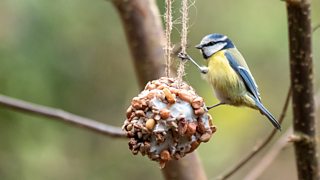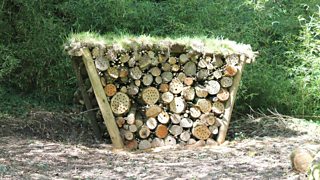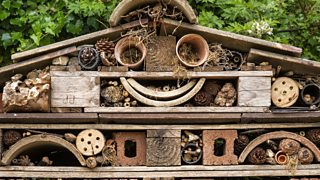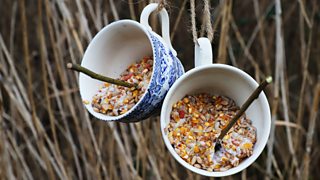With everyone spending more time at home due to lockdown now is an ideal time to think about how we can look after the wildlife we might see around us, either by building a home for birds or bees, or getting creative with different types of bird feeders for your garden, windowsill or balcony.
Giving wildlife a helping hand through the darker, winter months can make a big difference and, as research demonstrates, you can be sure of the pay back through improved wellbeing by just noticing and appreciating the natural world all around us.

Blue tit feeding at Sheringham Park in Norfolk by Rob Coleman
Ben McCarthy Head of Conservation and Restoration Ecology at the National Trust said: “Overwintering is a critical period for so many of our resident species. With food in short supply and milder, wetter winters becoming the norm many species are increasingly reliant on the support we can offer during this ‘hungry gap’.
“This can be most readily appreciated by the birds visiting your bird feeder - relishing the peanuts, fat balls and seed mixes almost as fast as the feeders can be filled up. Noticing nature brings a calmness to me and many others as we face into the challenges of lock down.”

Solitary bee hotel at the National Trust's Colby Woodland Garden in Wales by Steve Whitehead
Building homes and feeders
Steve Whitehead manages the National Trust’s Colby Woodland Garden in Wales – a place where the team has built all sorts of homes to help wildlife.
He says: “Providing spaces for creatures to hide, nest and overwinter is one of the best ways to attract wildlife into your garden.
“This can range from simply leaving a pile of logs in a quiet corner of the garden to building your own bespoke bug, bee or bird house or feeders.
“Try building a bug hotel with lots of hidey holes using materials that you might have lying around. An old wooden pallet makes a great base, and you can then fill it with various materials such as cardboard tubes, old flowerpots, straw, pinecones, bits of bark and bundles of twigs. Top it off with old rooftiles, turf, logs or a pile of leaves.

Bug hotel at Hughenden in Buckinghamshire by Andrew Butler
“Or give solitary bees shelter by adding a bee house to your garden. A wooden box with tubes works best for the females to lay their eggs and ‘plug’ the ends with mud, plant hairs or leaves. Mount it in a sunny, sheltered location in spring, and keep an eye out for the plugged tubes.
“Birds are an important part your garden's ecosystem, and creating bird boxes and putting out food will help them thrive. If you build a bird box, make sure you put it up high in a sheltered area – and they are best installed in late February before the nesting season gets going. In spring, provide protein-rich feed, such as fat balls. Seeds are best in the winter. If there are cats nearby place your feeder near a dense bush to provide birds with cover.
“It’s also vital to provide access to water. Water is vital for all sorts of wildlife from bees to birds to mammals. Leaving out a tray of water that you refresh regularly will be of great help to local wildlife – especially if you put some pebbles in it to give insects like bees a dry place to perch while they drink.”

Home made bird feeder at Wicken Fen by Mike Selby
The National Trust's how to guides:
